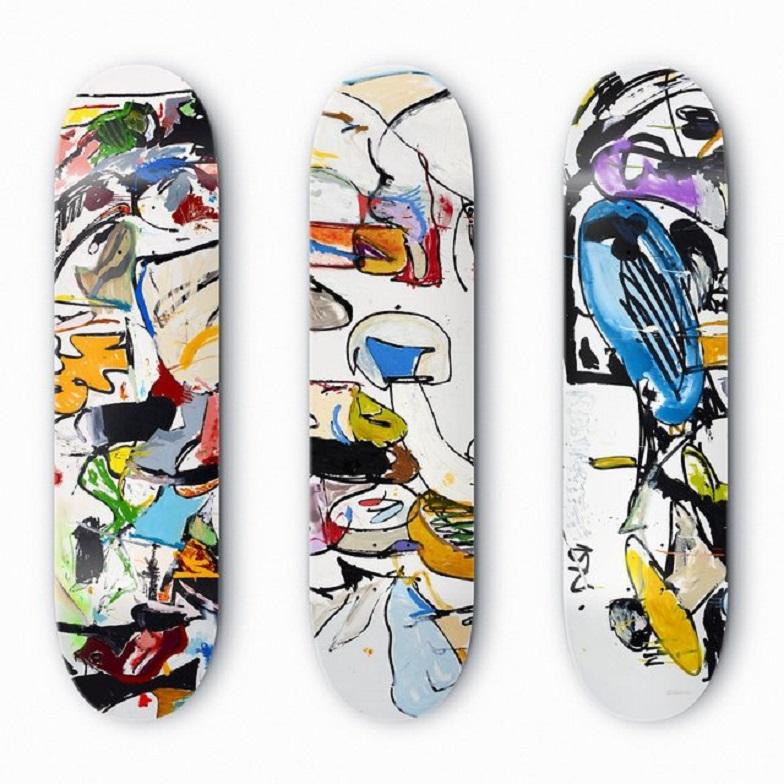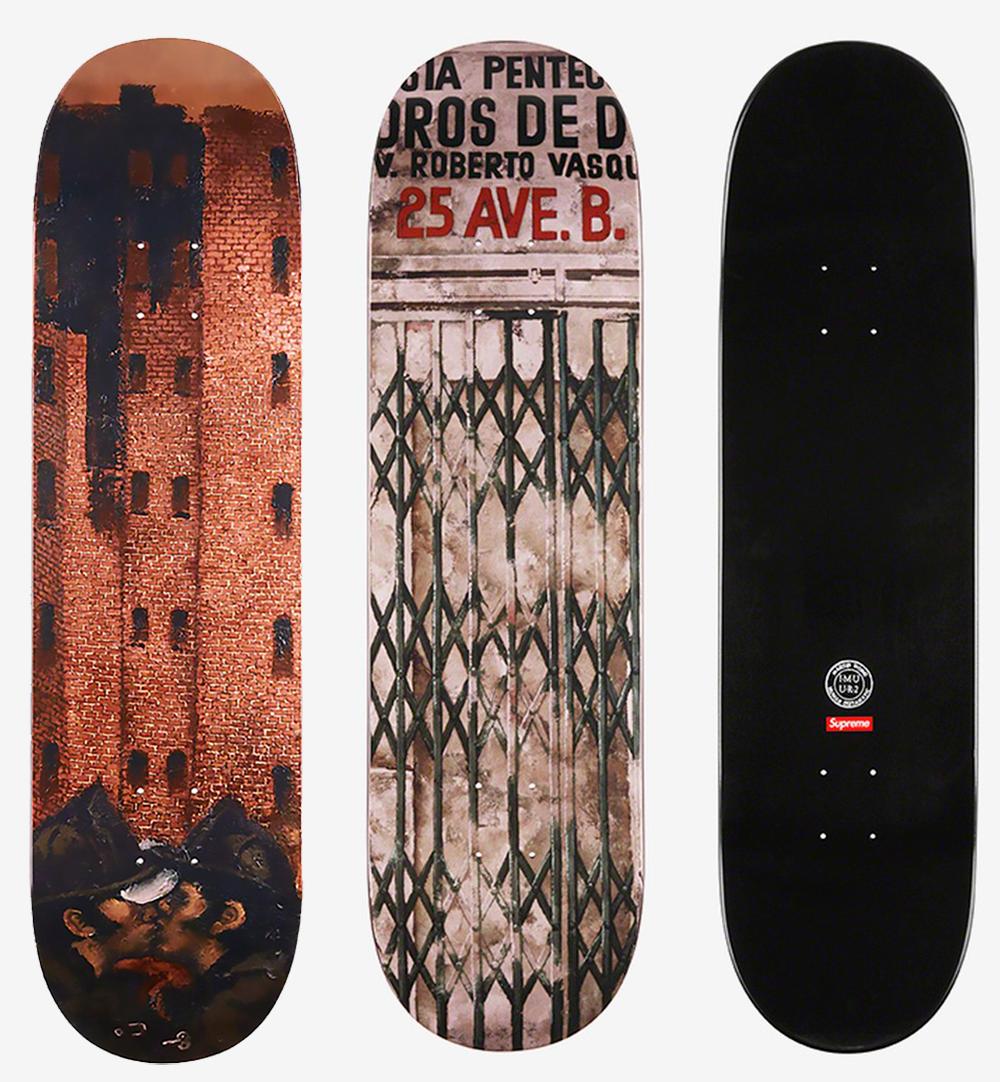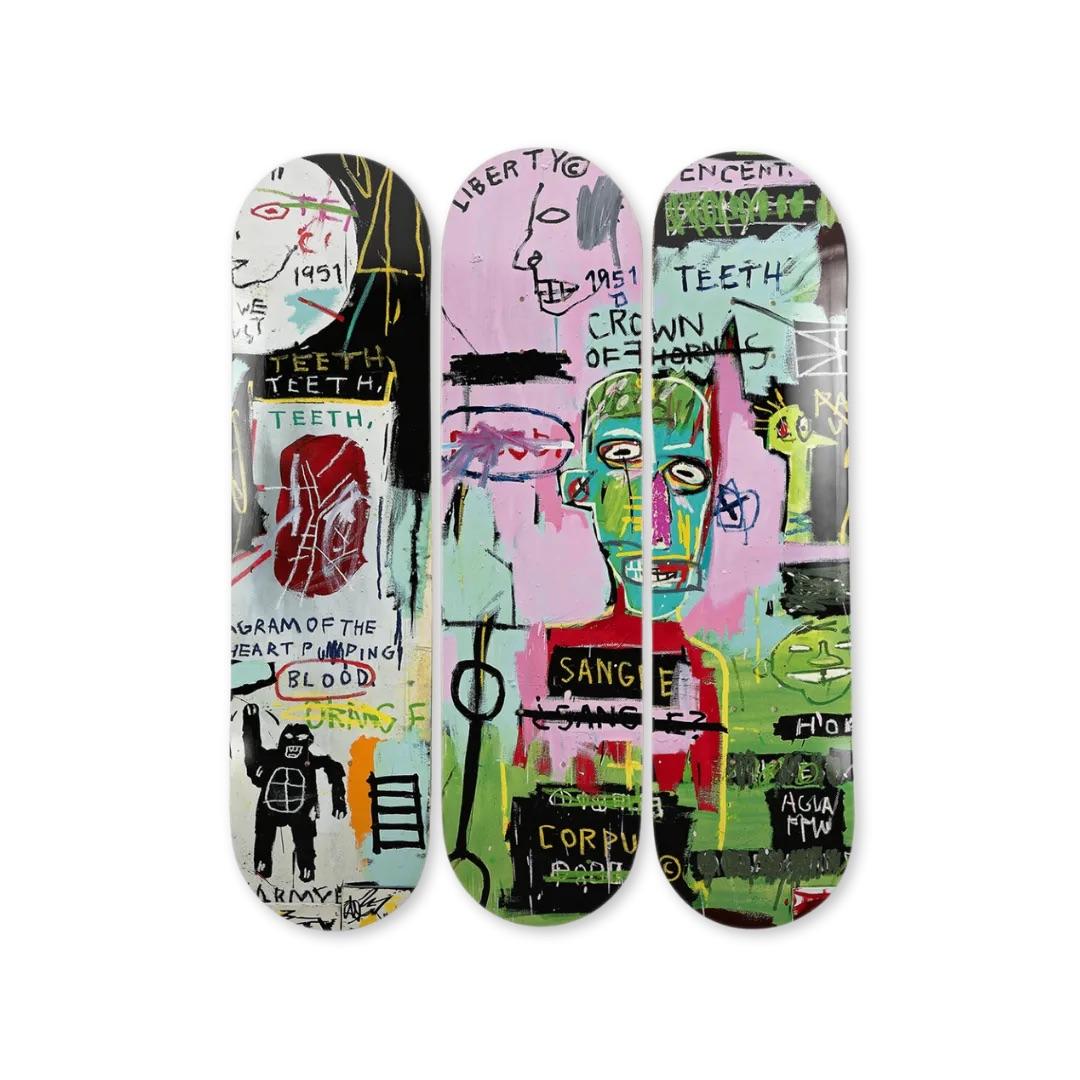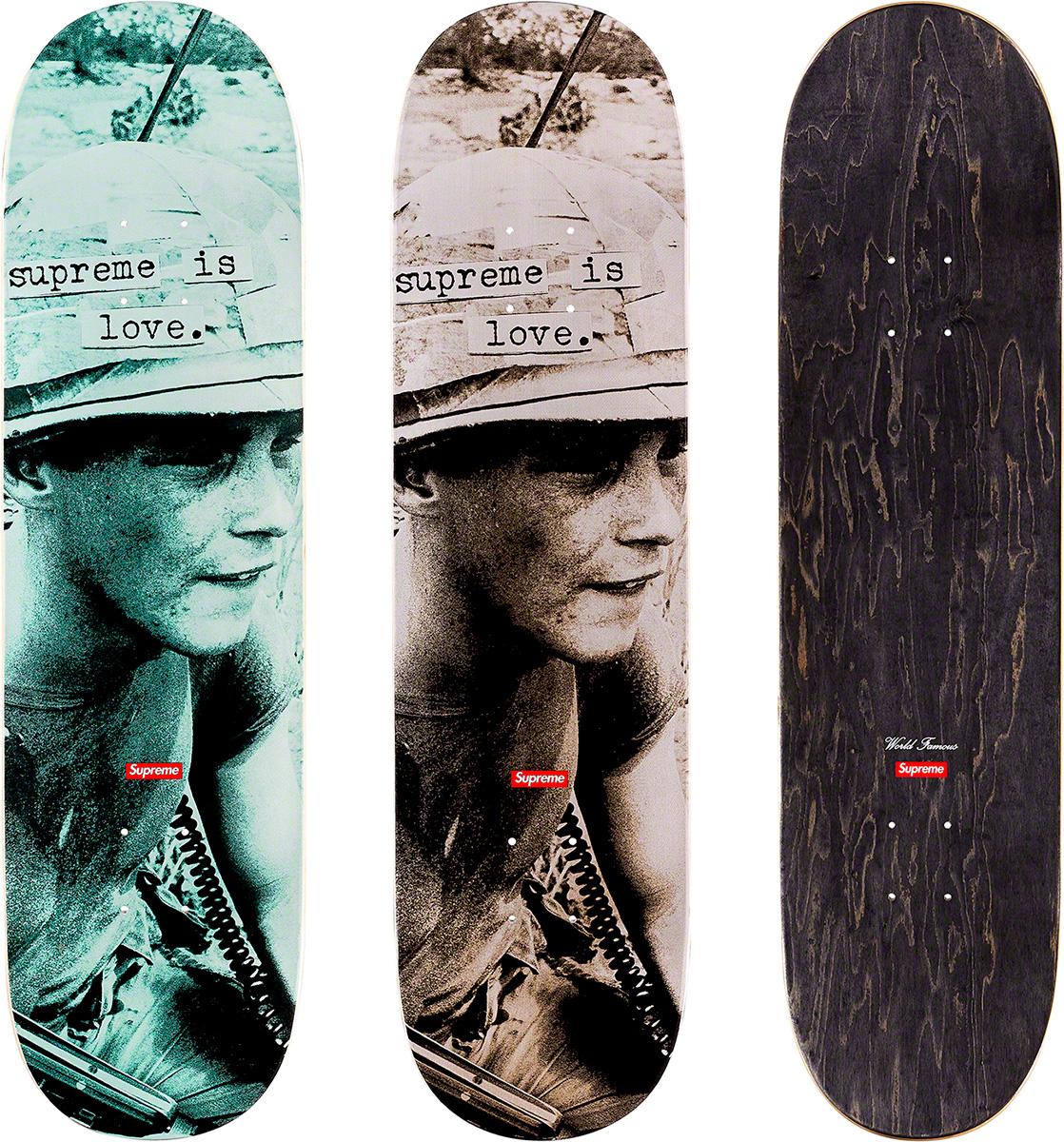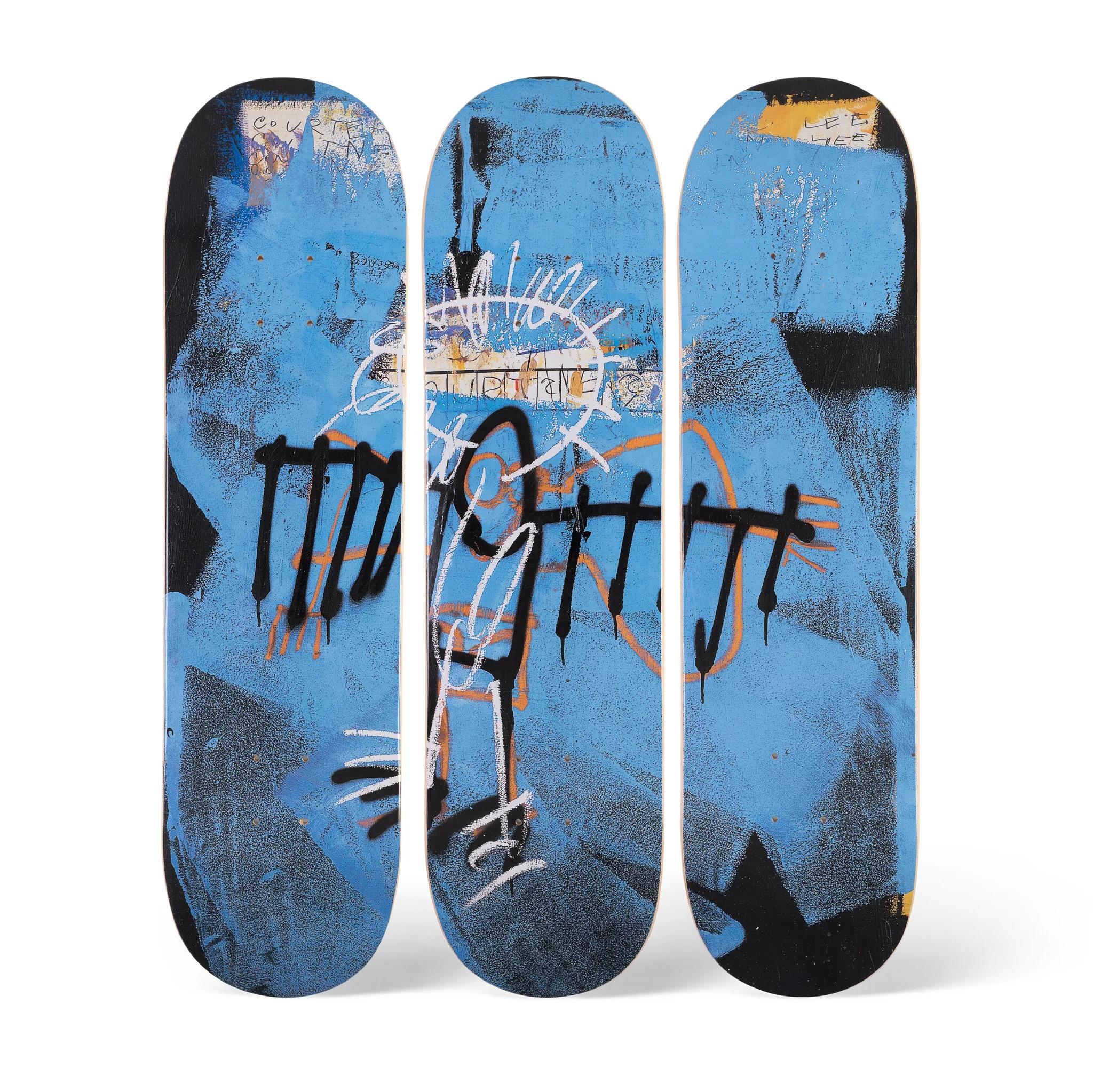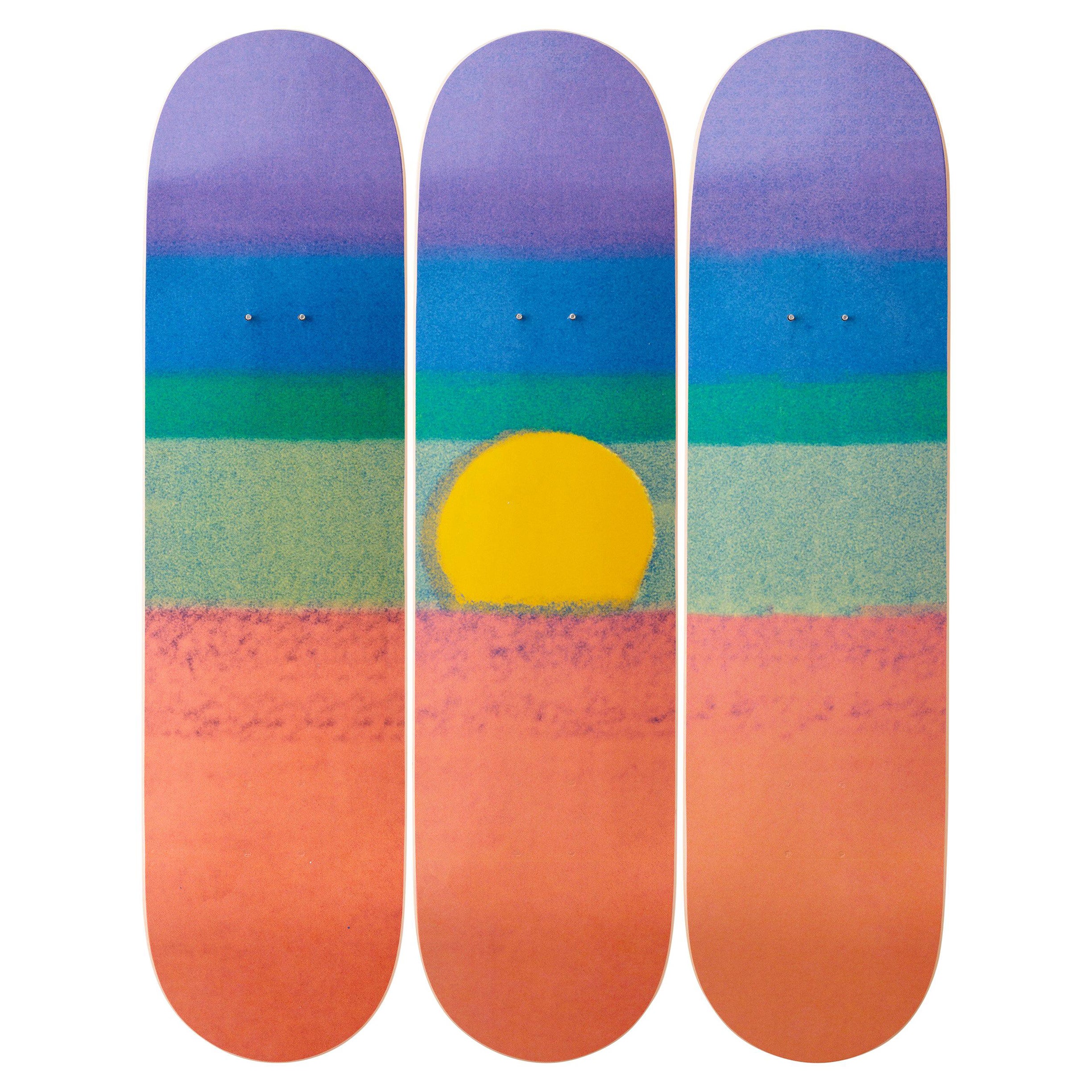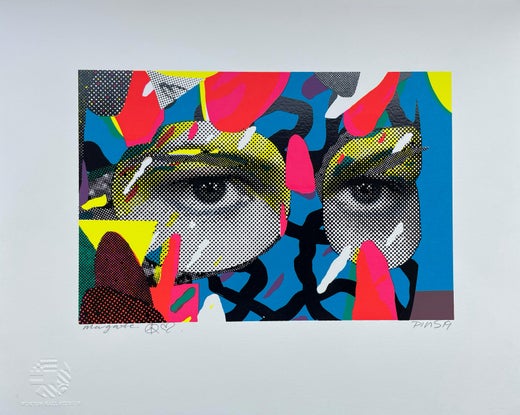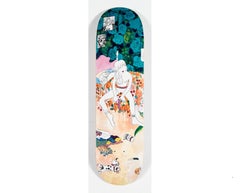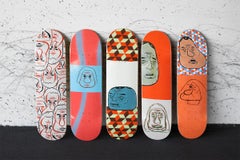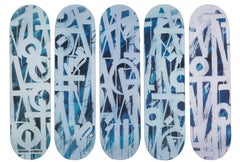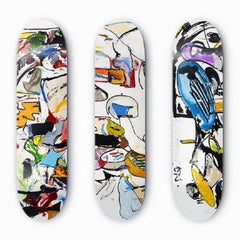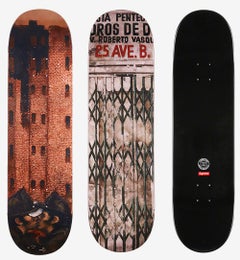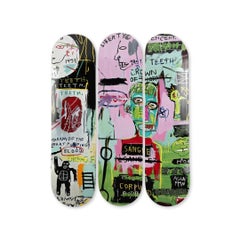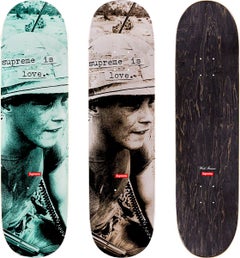Items Similar to Paul Insect I SEE Skateboard Deck Set Of 3 Beyond The Streets Signed XX/101 COA
Want more images or videos?
Request additional images or videos from the seller
1 of 3
Paul InsectPaul Insect I SEE Skateboard Deck Set Of 3 Beyond The Streets Signed XX/101 COA2020
2020
$1,750
£1,333.78
€1,524.60
CA$2,462.14
A$2,697.20
CHF 1,419.70
MX$32,191.76
NOK 18,097.58
SEK 16,543.92
DKK 11,388.48
About the Item
Paul Insect:
Paul Insect is a UK contemporary artist. Best known for his collective named ‘insect’ that started in 1996 he is a collage, portrait master when it comes to portraying the relationship between the visible and the invisible. His images are provoking and impressive covering the vast ranges; going to the extremes of sensitivity to strictness going from life itself to death. Paul Insect’s works are featured as a part of the opening of URBAN NATION Museum in 2017.
Insect also goes by the name of PINS. He had worked together with artist like Banksy at the Cans Festival, the Santa’s Ghetto project in Bethlehem, on the separation wall in Palestine and produced album artwork for DJ Shadow. The unique beauty of his Pop Culture portraits is more than just hand-painted faces, they contain a statement of significant segments of Popular Culture across the globe. He has amongst many, his solo Bullion exhibition at London’s Art gallery, Lazarides Gallery got really noticed probably because of his ability to play with these extremes but most probably because of his playful way of ‘speaking.’ His style developed throughout the years, yet his political criticism and desire to raise the awareness regarding our present stayed the same, thus the respect goes there.
“I SEE”
Beautiful Signed Triptych
~Skateboard Decks Set Of 3~
Edition of 101
Comes with signed Certificate of Authenticity Signed by the Artist.
- Creator:Paul Insect (British)
- Creation Year:2020
- Dimensions:Height: 32 in (81.28 cm)Width: 8 in (20.32 cm)Depth: 3 in (7.62 cm)
- Medium:
- Movement & Style:
- Period:
- Framing:Framing Options Available
- Condition:
- Gallery Location:Draper, UT
- Reference Number:1stDibs: LU132727378202
Paul Insect
Paul Insect is UK street artist, who is most famous for his 2007 solo show Bullion exhibition at London's Art gallery, Lazarides Gallery. Damien Hirst is reported to be a fan of Insect, having purchased the show days before it opened. Insect, who also goes by the name of PINS, worked alongside well-known artist Banksy at the Cans Festival, Santas Ghetto, and on the separation wall in Palestine.
About the Seller
5.0
Vetted Professional Seller
Every seller passes strict standards for authenticity and reliability
Established in 2002
1stDibs seller since 2019
243 sales on 1stDibs
Typical response time: <1 hour
- ShippingRetrieving quote...Shipping from: Draper, UT
- Return Policy
More From This Seller
View AllSupreme with Japanese Artist Auto Moai Collaboration Screenprint on Skatedeck
Located in Draper, UT
Offset lithograph in colors on skate deck
32 × 8 in
81.3 × 20.3 cm
Category
2010s Still-life Prints
Materials
Wood Panel, Screen
Barry McGee Full Set Reynolds, Spanky, Steamer, Dollin, Theotis Skateboard Decks
Located in Draper, UT
A member of the so-called Mission School, Barry McGee got his start as a graffiti artist in late 1980s San Francisco, where he tagged under the moniker Twi...
Category
2010s Street Art More Art
Materials
Wood, Maple, Screen
Unfinished Business SkateDeck
Located in Draper, UT
Joshua Vides, Unfinished Business Skate Deck in original packaging.
Category
2010s Street Art Mixed Media
Materials
Wood
RETNA X Beyond the Streets Complete Set of Skate Decks
By RETNA
Located in Draper, UT
Up for sale is a complete set of skate decks featuring offset lithographs in colors by the renowned artist Retna. This set, produced by Beyond the Streets...
Category
2010s More Art
Materials
Wood
Limited Edition Felipe Pantone Skate Deck Vaporwave Aesthetic Optichromie 122
By Felipe Pantone
Located in Draper, UT
Felipe Pantone "Optichromie 122"
Ltd Ed. Skate Deck. Dead Stock Sealed Like New Condition.
Produced for Beyond the Streets NTWRK 2020- by Co-Curator F...
Category
2010s Contemporary Prints and Multiples
Materials
Screen
FAILE HOLLYWOOD on skate deck, 2019
By Faile
Located in Draper, UT
FAILE
HOLLYWOOD, 2019
9.5" x 28.5"
7 ply maple wood
Unnumbered edition of 150
Each deck comes with a COA from BEYOND THE STREETS signed by
curator Roger Gastman that confirms authen...
Category
15th Century and Earlier Street Art Animal Prints
Materials
Lithograph, Screen
You May Also Like
SIGNED ed. 100 Skateboard set of 3
By Eddie Martinez
Located in Washington , DC, DC
SIGNED ed. 100 Skateboard set of 3
Category
21st Century and Contemporary Contemporary More Art
Materials
Maple, Plywood, Screen
Martin Wong Supreme set of 2 skateboard decks (Martin Wong Supreme)
By Supreme
Located in NEW YORK, NY
Martin Wong Supreme Skateboard Decks, 2019 (set of 2):
– 'Big Heat', 1986.
– 'Iglesia Pentecostal', 1986.
Set of 2 limited edition Martin Wong skateboard p...
Category
21st Century and Contemporary Photorealist Mixed Media
Materials
Wood, Screen
$400 Sale Price
20% Off
JEAN-MICHEL BASQUIAT - In Italian. Skate Decks Pop Urban Art Design
By Jean-Michel Basquiat
Located in Madrid, Madrid
Jean-Michel Basquiat - In Italian
Date of creation: 2024
Medium: Digital print on Canadian maple wood
Edition: Open
Size: 80 x 20 cm (each skate)
Condition: In mint conditions and n...
Category
2010s Pop Art More Art
Materials
Wood, Digital
$812 Sale Price
20% Off
Supreme skateboard decks set of 2 works (Supreme New York)
By Supreme
Located in NEW YORK, NY
Supreme Skateboard Decks, 2019 (set of 2 works):
A standout Supreme skateboard deck set featuring the Supreme logo and a printed World Famous logo on front. Strong vibrant colors and classic imagery that combines for unique pop wall art that hangs with ease.
Medium: Silkscreen on Maple Wood. 2019.
Dimensions: 31.5 x 8 in. (applies to each individual work).
Printed Supreme logo on front & reverse (applies to each).
New in original packaging, excellent overall condition.
Provenance: Acquired directly from Supreme New York.
From a sold out limited edition of unknown.
Related Categories
Damien Hirst. Andy Warhol. Supreme. 1980s Pop Art. Street Art. Skate Art.
Category
21st Century and Contemporary Pop Art Prints and Multiples
Materials
Wood, Screen
Jean-Michel Basquiat skateboard decks 2020 (Basquiat Angel)
By Jean-Michel Basquiat
Located in NEW YORK, NY
Jean-Michel Basquiat skateboard deck set:
Basquiat skateboard decks licensed by the Estate of Jean Michel Basquiat in conjunction with Artestar circa 2020, featuring offset imagery o...
Category
2010s Pop Art More Art
Materials
Wood, Offset
Sunset ‘Orange’ Skateboard Decks After Andy Warhol
By (after) Andy Warhol
Located in Jersey City, NJ
The Skateroom with the Andy Warhol Foundation
Set of three skateboard decks
7-ply Canadian maplewood with screenprint
Measures: Each: 31 H x 8 inches
Approx. 31 H x 24 inches whe...
Category
2010s Belgian Wall-mounted Sculptures
Materials
Maple
More Ways To Browse
Insect Art
Musee Matisse Nice Vintage Poster
Naomi Limont
New Mexico Travel Posters
Nicolas De Poilly
Noel Fielding
Oman Map
Omega Poster
Original Gay Art
Pablo Picasso Pencil Signed
Pakistan Vintage Travel Posters
Peter Mac
Porsche Targa Poster
Poster Mali
Poster Soviet Space Exploration
Red Grooms Ruckus Taxi
Robert Longo Rick
Russian Winter Hat
